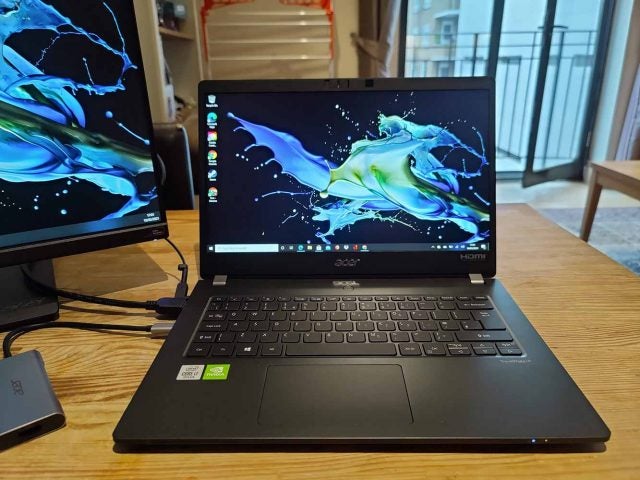The coronavirus pandemic has completely disrupted the normal routine of 9-5 working office work around the world.
Many thought that the radical changes brought on by the virus would mean an end to offices — especially with companies such as Twitter announcing that employees would be able to work from home forever. However, some workers are clamoring to return to offices, missing the social side of work and the division between domestic and professional life.
These seemingly incompatible trends will likely lead to a rise in agile working, with some employees working at home full time, and others splitting their time between home and the office.
So, with that in mind, here’s how to build an agile working set up that allows you to be as productive at home as you might be in the office, and avoid having to lug heavy equipment around with you.
What is Agile Working?
Agile working allows employees to work wherever it suits them. It’s similar to – but not the same as – flexible working, which lets people work away from the office for a specified amount of time or on certain occasions.
If your company is moving to agile working, this means that there can be no excuses for not being as productive at home as you are in the office.
Plus, it still means that you might need to work in different locations sometimes. This could mean heading to the office for key meetings and workshops, or to pitch to clients.
The Kit You Need for Agile Work
Let’s start with your computer — you’ll need a laptop.
An iPad Pro might be tempting, but they’re still not quite powerful enough for a lot of jobs and their keyboard cases aren’t great for typing on for extended periods of time.
Ideally, you want something thin, powerful, and with lots of ports for plugging into external monitors and other peripherals.
We’ve been using the Acer TravelMate P6 and it’s a very good fit. It’s powered by a 10th-gen Intel Core i7 chip, and has exceptional battery life — we were able to get over 10 hours without much hassle. What’s more, the P6 is light, tipping the scales at just over 1 kilo or just under 1.5 lbs.
This gives the P6 a lot of performance for its small 14-inch size. It can easily manage demanding tasks such as photo and video editing, while also being good for typing. However, we weren’t completely sold on its mouse, it was plasticky and not that responsive. Fortunately, unless you’re working outside a dedicated workspace, you’ll likely have an external mouse.
It also packs a ton of ports including two USB-A, one USB-C, an HDMI, a microSD reader, and a headphone jack. This makes it ideal for quickly plugging into a monitor when you’re on the go.
Prices start from $1,049 but the model we looked at cost $1,399. However, compared to a lot of business laptops, this is still a pretty good deal.
Display
You also need a display. However, the type of display you need will depend entirely on the job you do. Video editor? You’ll need something with a high resolution — but you probably don’t need the Apple Pro Display XDR which starts(!) at $4,999.
We’ve been using an Acer B8 monitor and for lots of text-based or spreadsheet work, it’s a doozy. It’s sharp, is height adjustable and can be pivoted up or down and left and right to find the perfect fit.
What’s more, it’s incredibly easy to assemble and get started with. Connecting the base to the arm is straightforward, the arm rotates into the base and can be locked-in with two captive screws. Then, the screen itself simply slides onto the arm mount with a reassuring “click” to let you know it’s secure.
The B8 also has a rotating top-mounted webcam — ideal if you’re worried about privacy at home. It can also work from an HDMI or a USB-C cable.














Keyboards and Mice
It’s surprising just how much a mouse and keyboard can improve your working from home set up.
There are plenty of options on the market but we’d recommend getting an ergonomic mouse to ease your carpal tunnel.
You also won’t need to get a mechanical keyboard, either. Unless, of course, you’re planning to use your work from home setup as a gaming setup as well.
With both a mouse and a keyboard, go wireless via Bluetooth where you can. I twill save you on the clutter of wires and on much-needed USB connections. Speaking of which…
Dongles
Ah yes, dongles. If you have a laptop lacking in ports, you’ll need a dongle to attach the rest of your devices to your setup. These, frankly, are a bit annoying but fortunately, they needn’t be expensive.
Plus, the increasing prevalence of USB-C plugs means that you should be able to pick up one relatively cheap.
Is Agile Working the Future?
It might have to be. Companies are looking to sell off their pricey city center offices to reduce overheads, which might doom the big, open plan working areas many of us have become used to.
What’s more, an increasing number of workers are looking for jobs that allow them to work wherever they want. In the UK, for example, 92% of millennials think flexibility is a top priority when job hunting. Agile working could also allow people to work around child care arrangements which might make it a big priority for workplaces that value inclusion and diversity.
However, as the world slowly begins to emerge from the pandemic, we’ll have to see whether all this talk is translated into genuine action.




